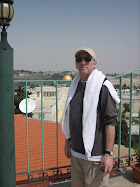Quote of the Week 419 - Listend/Hearing for Non-material Sustenance
Quote of the Week 419 - Listening/Hearing for Non-material Sustenance
Every one who is thirsty, come and drink. He who has no money, come, buy and eat. Come, buy wine and milk without money and without price. Why do you spend your money for that which is not bread and your labor for that which does not satisfy? Listen carefully to Me, and eat what is good. Let your soul delight in abundance. Incline your ear, and come to Me. Hear, that your soul will live…
--Isaiah 55:1-3, The Living Torah translation by Rabbi Aryeh Kaplan
Meditation (Click your selection, scroll down to view it)
- Audio Link: Interview - You Cannot Avoid Mystery; Eastern Meditation
- Audio Link: A Foundation for a Fruitful Meditation Practice: Science of Breath/Pranayama/Relaxation - Theory and Practice
- Audio Link: (Scroll to 11/04/18 entry) The Breath and Life Force; Guided Meditation - I Am an Empty Shell, Therefore I Am Full, etc.
- Meditation Basics - Expanded Version
- Meditation Basics - Condensed Version
- Mantra Meditation Basics
- Nada Meditation - Anahata/The Unstruck Sound
- Jewish Yoga Meditation
- Hebrew Mantras
- Hebrew Mantras, Part Two
- Hebrew Mantras, Part Three
- Hebrew Mantras - Adonai Hineni
- Healing Meditation: Ruach El Shaddai/Breath of Balance
- Meditating, Eating and Sleeping
- Shortcuts to Spiritual Development?
- Audio Link: Guided Meditation - I Am and Empty Shell, Therefore I Am Full; A Meditation on Emptiness and Dark Luminescence Based on the Opening Lines of Genesis
- Guided Meditation: The Stage
- Guided Meditation: I Am an Empty Shell, Therefore I Am Full; A Meditation on Emptiness and Dark Luminescence Based on the Opening Lines of Genesis
- Guided Meditation: The Rod, The Staff, and The Star
- Torah-Veda Meditation Class Site
- Interspiritual Contemplative Group
CURRENT TEACHING SESSIONS
Tuesday, April 8, 2008
The Beauty of Holiness v The Holiness of Beauty
In the context of Bezalel’s work on the Ark and Mishkan, the Rabbi speaks of the tradition of art within Judaism and makes a distinction as follows: “Religious art is never ‘art for art’s sake’. Unlike secular art, it points to something beyond itself.” Shortly thereafter, he concludes as follows: “The Greeks believed in the holiness of beauty …Jews believed in the opposite: hadrat kodesh (Ps29:2), the beauty of holiness. Art in Judaism always has a spiritual purpose: to make us aware of the universe as a work of art, testifying to the supreme Artist, G-d himself.”
I have always had difficulty in drawing these lines between the sacred and mundane/secular, the sacred and profane. I have also had difficulty with the tendency of religious Jewish thinkers, both contemporary and historical, to portray Judaism as superior in contrast to another culture, people, ethnic group, whatever. It seems to me the distinction the Rabbi is rather emphatically making is much more subtle to the point of almost being a distinction without a difference. Isn’t it part of a spiritual life to cultivate the perspective to regard everything as sacred, as everything emanates from the Divine? This is not to say there is no difference between special spiritually charged rituals or sites. A hard-boiled egg sitting on a Seder plate may rightfully be regarded differently than a hard-boiled egg sitting on your morning breakfast plate. Going to the bathroom involves a different quality of activity than approaching the bimah. But to me, these are just varying degrees of sacredness, and I wouldn’t make such a bright-line distinction between what is sacred and religious, and what is not.
I am a great believer in art for art’s sake, because I believe that any truly inspiring art, even what the Rabbi would probably consider “secular”, originates from Divine inspiration and points to it. I cannot think of any art that does not point to something beyond itself; I think that is inherent in its definition. If a “secular” artist paints a still life of a bowl of fruit and titles it simply “Bowl of Fruit”, is that any less inspiring than a comparable still life drawn by a Torah scholar that is entitled “Bowl of Fruit as a Depiction of Some of G-d’s Many Wondrous Creations for the Benefit of His Children”? I think they both contain the same message. Any still life worth looking at carries this message inherently. To me, any kind of art exists for the very purpose of drawing attention to the unique and wondrous qualities of what is being portrayed, to make us pay proper attention and homage especially to what we may usually regard as merely a mundane subject or object, to call our attention to the awesomeness of creation, and thus it is inherently sacred, whether it be deemed the holiness of beauty or the beauty of holiness.




























No comments:
Post a Comment